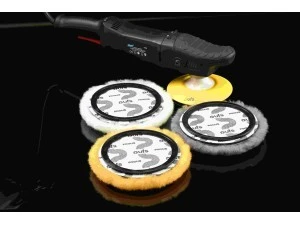
Polishing techniques are an important part of car maintenance and play a significant role in protecting the vehicle's surface and maintaining its shiny appearance. This article will examine the various polishing techniques in detail, including hand application, using polishing pads, and sanding with polishing techniques.
Hand Polishing Techniques
Hand polishing techniques are preferred, especially for small areas and precise applications. This method allows the user to feel and control scratches and surface imperfections more closely. Hand application is typically done using a soft cloth or sponge. Among the polishing techniques, this method is particularly preferred for sensitive areas and detailed work.
Hand application is performed using circular motions and light pressure. This ensures that the polishing compound is evenly distributed over the vehicle's surface and effectively removes scratches. Hand polishing also allows the user to continuously assess the condition of the surface during application and adjust the process if necessary.
Can Polishing Be Done by Hand?
Polishing can be done by hand, and this is an effective method, especially for detailed work and small scratches. Hand polishing is used when specific areas of the vehicle require special attention. This method provides the user with more control and allows for more precise applications. Additionally, since it does not require any electric tools, this method can be more economical and accessible.
Hand application requires controlling the right amount of polish used and the application time. With this method, the user can perform a more delicate process on scratches and imperfections, reducing the risk of damaging the vehicle's surface. Hand polishing techniques are ideal, especially for amateur users and those who do car maintenance as a hobby.
Polishing Techniques with Polishing Pads
Polishing techniques with polishing pads provide effective and quick results, especially on large surfaces. The use of a wool polishing pad is particularly preferred in professional polishing applications because this method offers a more uniform application and allows large areas to be treated in a shorter time. A polishing pad ensures the even distribution of the polishing compound on the vehicle's surface and removes scratches more effectively.
In this technique, the rotation speed and pressure significantly affect the effectiveness of the polishing process. The polishing pad applies even pressure to the vehicle's surface, ensuring that the polishing compound is evenly spread. This helps remove scratches and surface imperfections more quickly and effectively. Among the polishing techniques, this method is ideal, especially for large and flat surfaces.
Sanding Techniques for Polishing
Sanding techniques for polishing are used to remove deep scratches and serious surface imperfections. This method is preferred, especially in cases where the paint is damaged and covered with deep scratches. The sanding process helps reach deeper layers of scratches and imperfections, flattening and smoothing the surface. After sanding, applying polish protects the surface and gives it a shiny appearance.
The use of sandpaper should be done carefully and controlled, as excessive sanding can damage the paint. During the application, it is important to select the right sandpaper grits and adjust the sanding time correctly. Among the polishing techniques, this method is effective in more intensive repair and restoration work.
Should You Use a Pad or Sponge for Polishing?
The choice of material for polishing depends on the type of application and the condition of the vehicle's surface. Felt pads are generally used for more aggressive polishing processes and provide faster results. Felt pads are particularly effective on large surfaces and for removing deep scratches. However, using felt pads requires more attention and experience.
Sponge pads, on the other hand, are ideal for a gentler and more controlled polishing application. Sponge pads are used, especially for removing superficial scratches and minor imperfections. Sponge pads provide a smoother and lighter application, making them suitable for delicate surfaces and detailed work. The choice of material for polishing techniques should be determined based on the needs of the vehicle's surface and the user's preferences.




